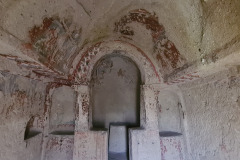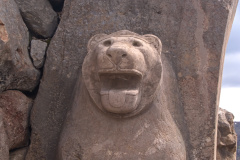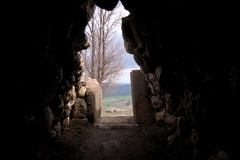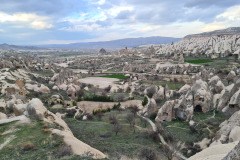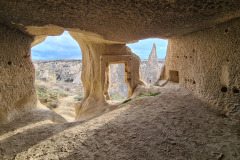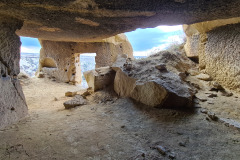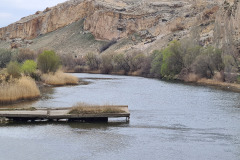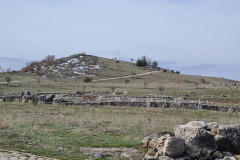Hattusa
Hattusa, also known as Hattusha, was the ancient capital of the Hittite Empire, a powerful civilization that thrived in Anatolia (modern-day Turkey) during the Late Bronze Age. Situated near the modern town of Boğazkale in central Turkey, Hattusa is one of the most significant archaeological sites in the region and holds immense historical and cultural importance.
The Hittite Empire reached its peak during the 2nd millennium BCE, and Hattusa served as its political, religious, and administrative center. The city was strategically located on a high plateau, providing a natural defense against potential invaders. It was surrounded by a massive defensive wall, fortified gates, and watchtowers, showcasing the Hittite’s military prowess and architectural ingenuity.
Hattusa’s layout was organized into an upper city, which housed the royal palace, temples, and administrative buildings, and a lower city, where the majority of the population lived. The city’s design featured wide streets, well-planned neighborhoods, and an advanced water supply system that included tunnels and aqueducts.
The city’s most iconic feature is the Great Temple Complex, a sacred area that housed several temples dedicated to different deities of the Hittite pantheon. Among these, the Temple of the Storm God, Tarhunza, stands out as the most prominent and revered place of worship.
Another notable site within Hattusa is the Yazılıkaya rock sanctuary, located a short distance from the city’s main center. This sanctuary is known for its impressive rock-cut reliefs depicting the Hittite pantheon and royal figures, providing valuable insights into the religious and social beliefs of the Hittites.
During the 13th century BCE, Hattusa faced invasion and destruction by the Sea Peoples, which marked the decline of the Hittite Empire. The city was abandoned and largely forgotten until its rediscovery by archaeologists in the early 20th century.
Excavations at Hattusa have revealed numerous artifacts, clay tablets, and inscriptions written in cuneiform script, providing valuable information about the Hittite language, history, and daily life. These discoveries have shed light on the political structure, international relations, and cultural achievements of this ancient civilization.
In recognition of its historical significance, Hattusa was designated as a UNESCO World Heritage Site in 1986. Today, visitors can explore the impressive ruins of the city, including the royal citadel, temples, and defensive walls, and marvel at the remnants of an ancient civilization that once wielded significant power and influence in the ancient world. Hattusa stands as a testament to the ingenuity and achievements of the Hittite people and continues to be a source of fascination and admiration for archaeologists, historians, and tourists alike.


